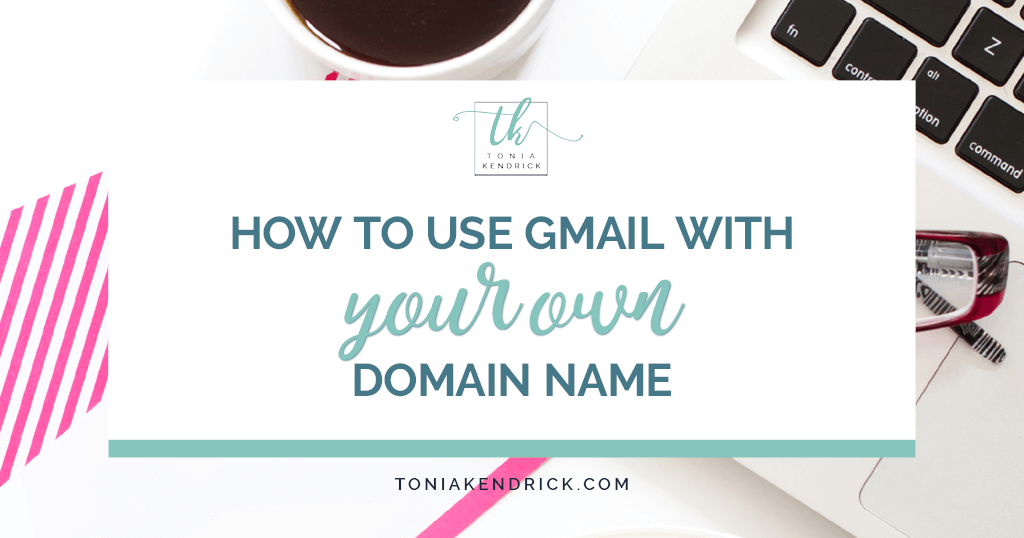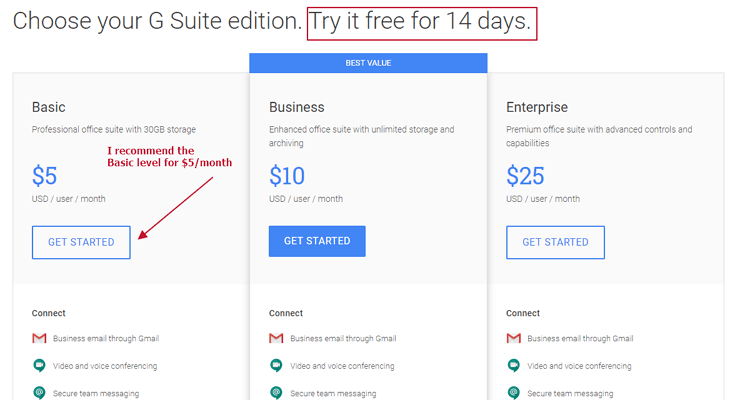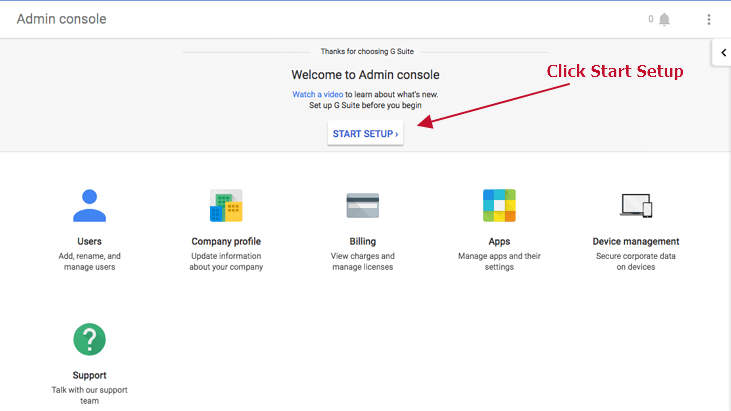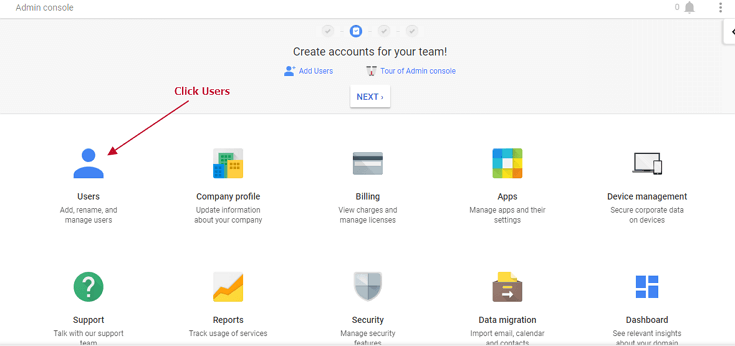How to Use Gmail With Your Own Domain Name
Have you ever wondered “can I use Gmail with my domain name?”
When I started my business, I needed a business email address. I didn’t want to use my personal email, because [myname]@gmail.com doesn’t exactly scream successful business, now does it? It’s not the professional image that I want to portray.
So I set up a couple of custom email addresses through my hosting service, using my domain name. But when I tried using the webmail interfaces provided by my web host, I found that they were just dreadful. Clunky, lacking in features, and just plain ugly.
At this point, I knew I wanted to go a different way. Fortunately, Google offers a simple solution that enables you to use Gmail’s email client with your own domain.

This post contains affiliate links, which means I receive a small commission if you make a purchase using this link. For more information, see my full disclaimer here.
Why use Gmail with your own domain?
While there are many reasons that you might want to use Gmail with your custom domain, two of them rise to the top.
You’ll have a professional email address
Using an email address that includes your business name is simply more professional. A standard gmail address like “Yourname@gmail.com” is fine for your personal email. But most businesses use email addresses like “yourname@businessname.com.” Not only is it standard practice, but it’s part of your branding.
You probably already know how to use Gmail
If you use Gmail for your personal email, then you already know how to use the program. You are familiar with the design and interface. There’s no need to waste time learning how to use a new email service. Plus, Gmail makes it easy to access email from your computer desktop or mobile device.
Even if you’ve always used other email providers, Gmail is very intuitive. You can start using it without a huge learning curve.
Two ways to use Gmail with your custom domain
There are two easy ways that you can use Gmail with your own domain name.
The free method: use your personal Gmail account
The first method, using your personal Gmail account, is free. Google has an option that allows you to check emails from other accounts within your Gmail account. This might be the right option for you:
- if you don’t get many emails
- if you are super-organized about email
- if you know how to use tags in Gmail to distinguish between the different accounts
If you go this way, you’ll need to be mindful of which email account you’re replying to.
However, if you do receive a lot of emails, using your personal Gmail account could quickly become cumbersome.
Which leads to the second way that you can use Gmail with your custom domain (and the one that I use and recommend):
Recommended: Use G Suite for your business email
G Suite not only enables you to set up a professional domain email address, but also includes other Google apps, such as Docs, Sheets, Slides, Calendar, Hangouts, and more.
There is a cost, but I think the benefits are worth it. It’s easy to keep your work and personal email accounts separate. You can keep personal and business accounts open at the same time in different tabs or windows. Plus you get 30 GB of cloud file storage with the Basic account.

Coupon Code
Get 20% off G Suite with this coupon code:
U7ALJV7EYVGKYGY
How to set up a custom email address with Gmail using G Suite
Here are step-by-step instructions for how to set up your G Suite account and set up your custom email address.
1. Make sure you have a custom domain
The first step is to buy a custom domain if you don’t have one already.* If you need to buy a new domain, then I recommend Namecheap. I use them as my domain registrar because they are inexpensive and user-friendly.
2. Head over to the G Suite site and click Get Started
Visit the G Suite site and click the get started button.

3. Enter your business information as requested
You’ll be asked for some basic information, such as your business name, number of employees, etc. Enter the information requested in each step to create your G Suite account.
4. Enter your custom domain name
One of the steps will ask for your custom domain name. If you already have a domain, then enter it now. If not, head over to Namecheap to purchase one before proceeding any further.
5. Select a Basic or Business account
Unless you know that you need unlimited storage, I recommend starting out with the Basic G Suite account. It costs $5 per month and includes 30 GB of cloud storage, compared to $10 per month for the Business account. You can always upgrade later if you find that you need the additional cloud storage or other features that are included in the Business edition.
Both options include a 14-day free trial.
6. Verify your domain
Now that your G Suite account has been created, you need to verify your domain name. Click the “Start Setup button.”

There are several ways to do this, but I think the easiest option is to insert a meta tag into WordPress. This is simply a bit of code that you will copy and paste into WordPress. You can paste it into your WordPress theme settings or enter it into a plug-in if your theme doesn’t provide a space for header scripts.
If you have a Genesis theme
One of the reasons that I always use Genesis themes is that they include a space to add header scripts.
Go into Genesis Theme Settings, scroll down to Header and Footer Scripts, and paste the code into the Header Scripts box. (If you have already added something to this box, such as your Google Analytics code, just paste the new code below it.)

Or use a WordPress plug-in
If your theme doesn’t include a space for header scripts, then you can install a plug-in to do the same thing. Here are two plug-ins that make it easy to add header scripts to WordPress:
Set up your email MX record
This is the last step in setting up your custom email address. It’s what makes the emails actually flow into Gmail. This will require changing some settings at your web host. Google has specific instructions for many web hosts here. If your host is not the list, then follow the generic instructions here.
This step sounds scary because the instructions have a lot of technical language. If you follow the instructions step-by-step, you should have no problems. However, if you do, contact customer support at your web hosting provider. They will be able to help you.
Congratulations! You’ve set up your own domain to work with Gmail
You’re all done with setup and you are ready to use Gmail with your domain. To make sure that everything is working correctly, create an email to send from your new account to another account that you own. It’s better to troubleshoot any issues now before you start sharing your new email address with others.
Add additional email addresses if you need them
At this point, you can add additional users or create alias email addresses if you need to.
Each “user” costs $6 per month.
You may not need to add additional users, however. You can add multiple alias email addresses to any user at no additional charge. You may want to add some non-personalized email addresses such as “hello@yourcompany.com,” “support@yourcompany.com,” etc. This will allow you to filter specific types of email messages into different mailboxes.
To add users or alias email addresses, click Users in your Google Admin console.

To add alias emails, select a User, then click on User details. You’ll see an option to add Email aliases.

Now you have a professional email address, a variety of alias email addresses, plus all the other apps and storage that come with G Suite.
Coupon Code
Get 20% off G Suite with this coupon code:
V4XGQDDTRDHC7HP
*If you’re just starting out and haven’t started your blog yet, check out this post where you’ll learn how to start a blog with WordPress and SiteGround.
Want to remember this? Save How to Use Gmail With Your Own Domain Name to your favorite Pinterest Board.



